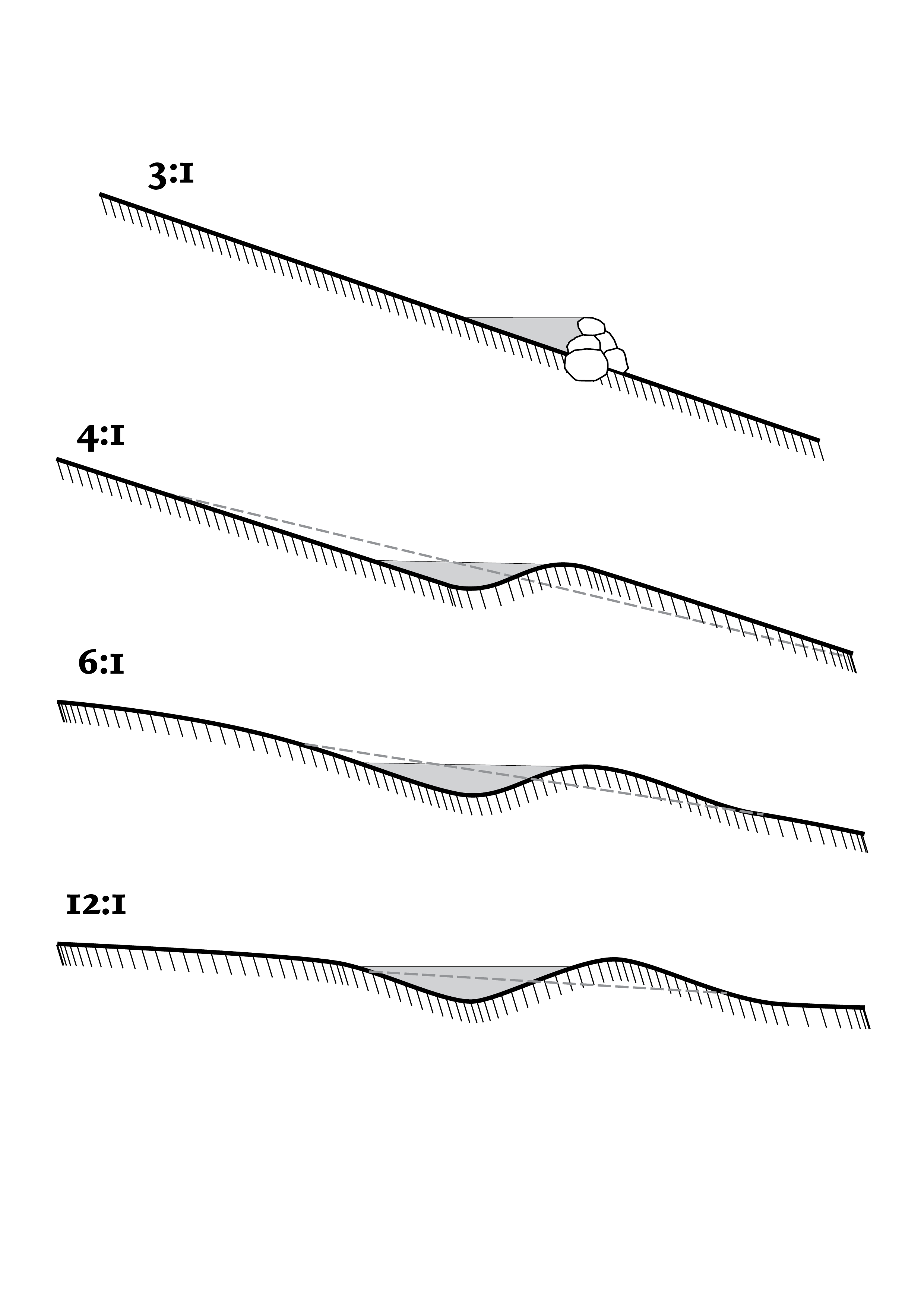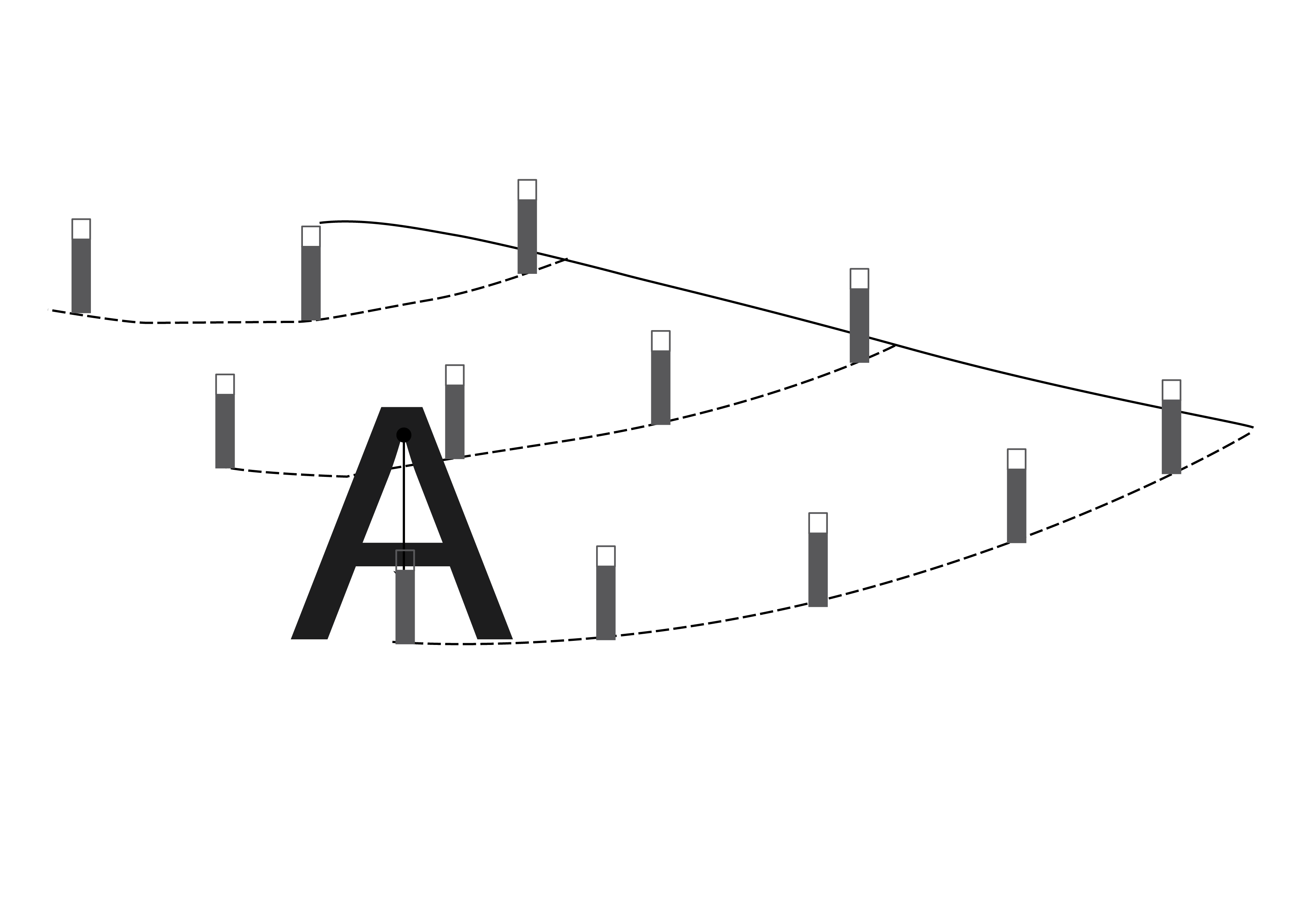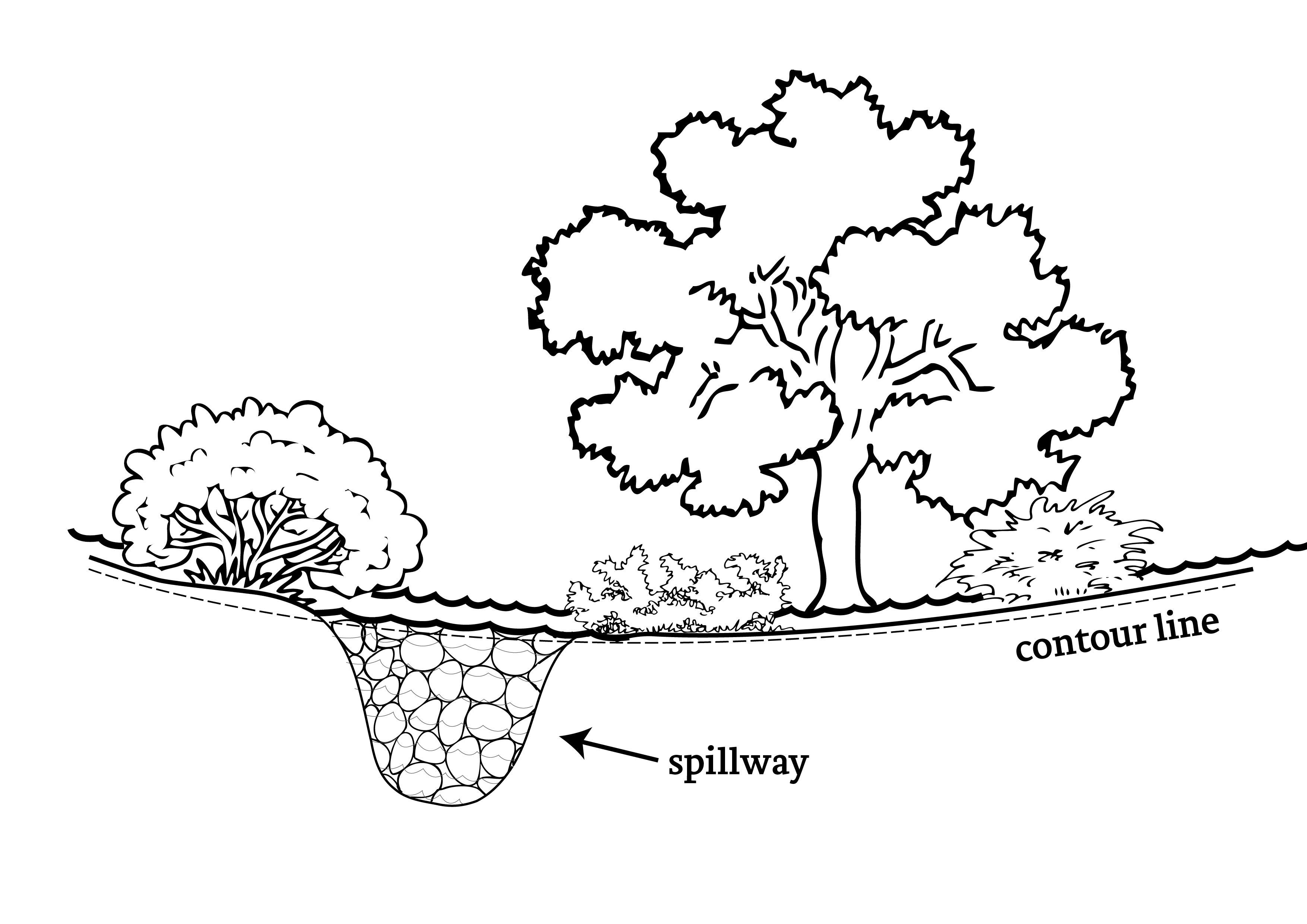EARTHWORKS - INSTALL SWALES
Swales are tree-growing systems and the main water strategy of a food forest. They help to capture and soak runoff water into the ground, improve groundwater recharge, and establish trees and other plants.
They are most useful on sloping sites with fine-textured, dry, compacted, or eroding soils, where runoff is an issue, especially in arid or semi-arid climates.
Essentially, a swale is a shallow trench laid out dead-level along the land’s contours. It can be anywhere from 1 to 4 feet (0.5 to 1. 2m) or more wide ,1 to 3 feet (0.5 to 1m) deep, and of whatever length necessary. The earth dug from the swale is piled on the downhill side to make a raised mound or berm roughly the same size as the trench.
Surface water and rainwater run downhill into the dug-out portion of the swale—the shallow trench, spread out along its length—and slowly percolate into the soil. This slow infiltration recharges the water table for a broad area stretching downslope of the swale, creating an underground reservoir that aids plant growth.
Planting trees or other crops on the mound (berm), or just below the downhill side of the swale, takes advantage of the infiltrated water, and improves tree survival during dry periods.
The swales fill with mulch, soil and organic matter over time and are eventually made obsolete as the mature trees take over the swale’s functions.

Swale – a raised mound and a trench holding runoff water and infiltrating it into the soil.
What you’ll need? low-tech/low-cost option
Survey tools:
- A-frame level
- Landscape flags or wooden stakes
Excavation tools:
- Pointed shovel
Pick ax - Metal
rake
Swale construction materials:
- Compost (optional)
- Cardboard (optional)
- Mulch – Woodchips, Straw…
- Miscellaneous rocks, any shape
What you’ll need? high-tech/high-cost option
Survey tools:
- Laser level
- Landscape flags or wooden stakes
Excavation tools:
- Backhoe, excavator or tractor with one-bottom plow
- Pointed shovel
- Metal
rake
Swale construction materials:
- Compost (optional)
- Cardboard (optional)
- Mulch – Woodchips, Straw…
- Miscellaneous rocks, any shape




ADDITIONAL RESOURCES:
Books:
- The Permaculture Earthworks Handbook: How to Design and Build Swales, Dams, Ponds, and other Water Harvesting Systems
- Rainwater Harvesting for Drylands and Beyond (Vol. 2): Water-Harvesting Earthworks
- Edible Landscaping with a Permaculture Twist: How to Have Your Yard and Eat It Too
- Gaia’s Garden: A Guide to Home-Scale Permaculture, 2nd Edition
- The Resilient Farm and Homestead: An Innovative Permaculture and Whole Systems Design Approach
Copyright © 2023 Permaculture Apprentice. All Rights Reserved | Privacy | Terms of Service |Member Agreement